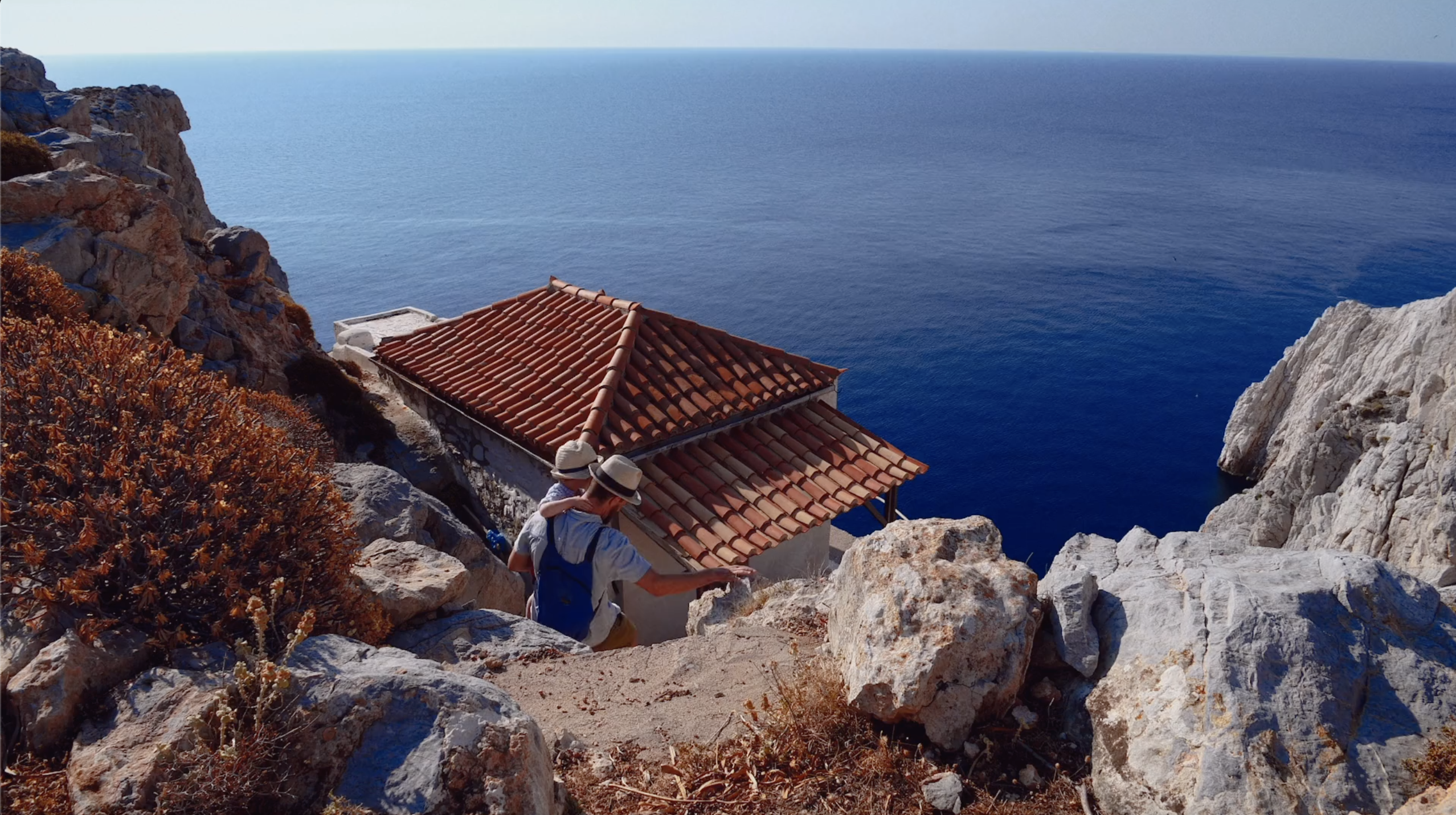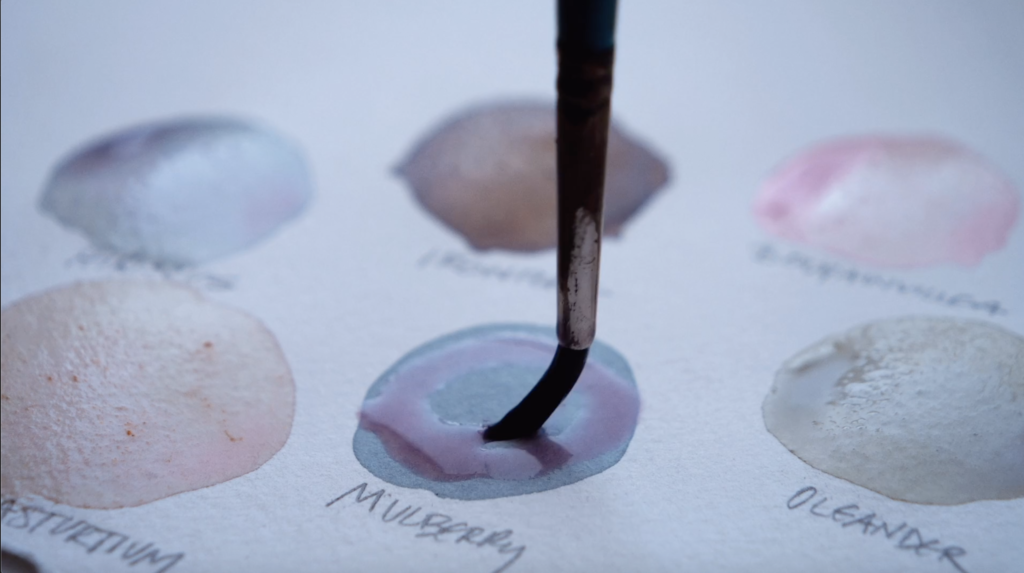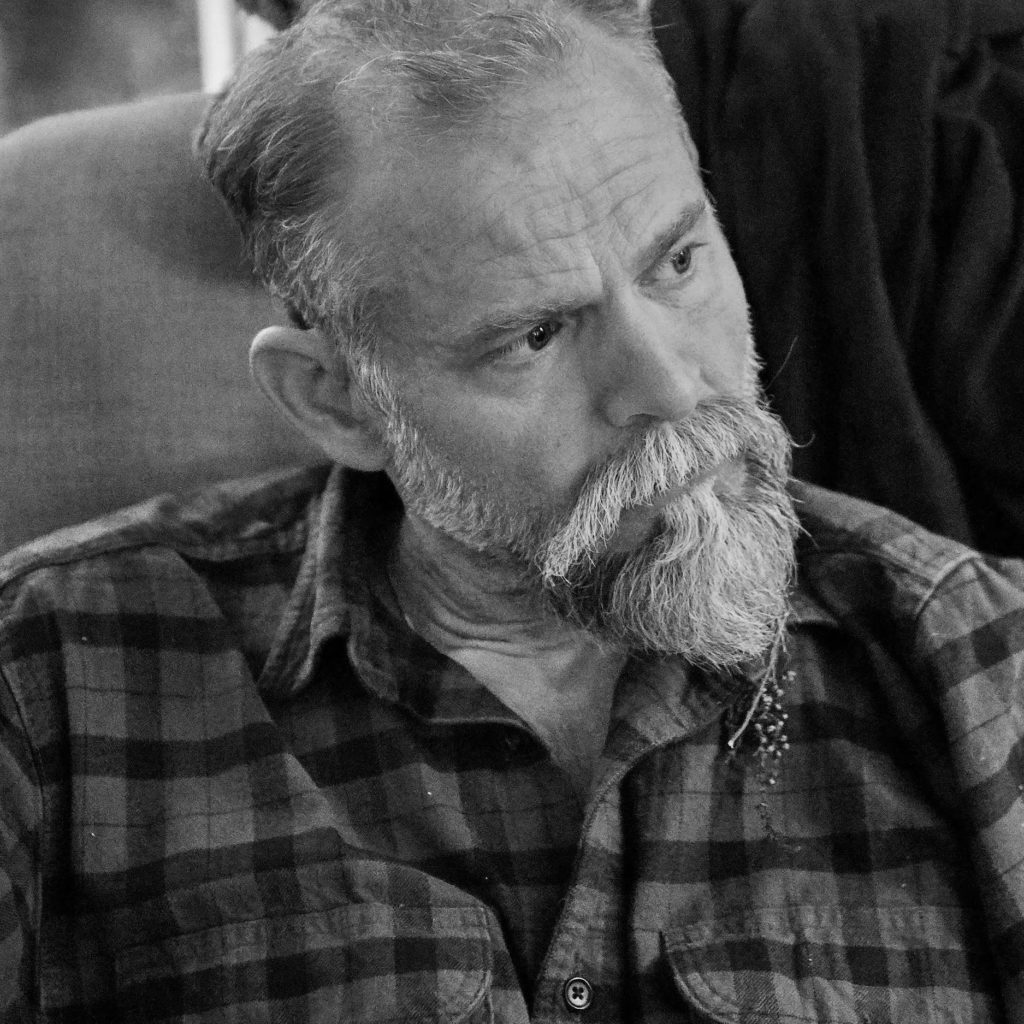
Climbing Eros: Place
DAMON: When watching Climbing Eros, it is easy for me to think about the trip we made to Greece a few years ago. I think of the house where we stayed and the fine collection of bric-a-brac, the stone urns, the Davidoff tobacco, and the plum tree in the front garden. I must have eaten a dozen plums. It is a special place. How might we locate this particular place in Climbing Eros? Are there particularities about the location of Eros that we should notice, that contribute to a sense of or need for pilgrimage?
CHARLIE: It’s a place that has been mythologized by generations of artists, writers, and musicians, but it remains tangible alongside those stories. It hasn’t been consumed or staged like so many places gone to tourism. The island has as many ruins as new constructions, yet even those are kept to strict 18th century building codes. Today, a new home can be no larger than the existing foundation it’s built upon, and new foundations are forbidden. I was told you can pick out the oldest homes by looking for three exits. I’ve seen them. Each doorway leads in a different direction as a defense tactic against pirates. The grandest of these old homes are said to be connected to each other via underground passageways for the same purpose. There are stories of high speed, subterranean getaways through tunnels large enough for a mule and its rider. Here, material reality seems to mix with folklore. I’m always drawn to that point between what can be touched and what can only be hinted at or hoped for. It is the sort of thing that might motivate a pilgrim to walk.

BEKA: The island decided early in the 20th century not to allow wheeled vehicles. This left a landscape untouched by the automobile and the infrastructure required to maintain such things. Foot and donkey paths crisscross the island connecting small villages, monasteries, and ports. Lately, I have grown interested in translating such unique places into visual artifacts. In the film, I begin by walking paths and gathering blossoms from nasturtium, bougainvillea, oleander, some mulberries, and the odd metal object. Then I make ink from the objects gathered. The substance of the place and its particularity is allowed to speak through this transformation of material into pigment. The abstract juxtapositions of botanicals with found metals open a space for contemplation. These meditations can take us to those jagged coastlines, meandering goat paths, and rocky ruins.

CHARLIE: I recall reading an account written by a through-hiker who had just walked alone across the entirety of the Frank Church Wilderness in central Idaho. He said you need at least two weeks to slow to the rhythm of that landscape, a week more to cross it, and at least another to emerge. I wonder how many travelers ever arrive anywhere before returning home? It takes a pilgrimage, really, which is the opposite of tourism. “A place doesn’t become place until we begin to walk. Until some part of our real person is touched by real earth.” It’s one of your lines from the project that resonates with me most, and it’s a good logline for the film as a whole.
Writer Damon Falke, Director Charles M Pepiton, and Artist Rebekah Wilkins-Pepiton have been collaborators since 2008.
This is the first of three CONVERSATIONS about Climbing Eros, a short documentary about crossing distance and returning to earth.



